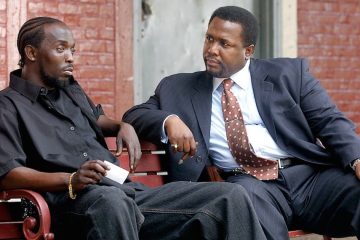The first episode of House of the Dragon, the prequel to Game of Thrones, set HBO ratings records when it debuted on August 21, 2022.
Although Game of Thrones became one of the most addictive series on TV, it unfortunately fell victim to some very questionable writing choices in its final seasons. It’s too soon to tell if House of the Dragon will meet an equally frustrating end, but at least it began on the right foot.
The pilot episode of House of the Dragon is a great example of how to introduce a complex story — in this case, the crux of author George R. R. Martin‘s book Fire & Blood — in a way that audiences can quickly and easily understand, even if they never watched (or read) Game of Thrones.
Here are 7 things Hollywood screenwriters and TV pilot writers could learn from the pilot episode of House of the Dragon.
WARNING: EPISODE 1 SPOILERS AHEAD for House of the Dragon (and Game of Thrones)!
1. Keep the Scope of a TV Pilot Simple
Game of Thrones is a complicated story about various noble houses vying for the throne of Westeros. Each house has their own allies, enemies, histories, and betrayals. Some of the story takes place on other continents. Even more of it involves a throng of ice zombies that have nothing to do with the political plot at all.
The story is so complex, people worried it could never be adequately adapted to film or TV. (Heck, it’s so complex, George R. R. Martin still hasn’t even finished writing it yet.)
By comparison, House of the Dragon is just about House Targaryen, the only house that could control dragons.
In fact, the plot centers on one single question of succession. After King Viserys’s wife and son die, his brother Daemon becomes his expected successor. But because Daemon is unruly, Viserys is persuaded to instead name his daughter Rhaenyra his successor instead. This break with tradition puts Rhaenyra in line to become the first Targaryen queen in history.
Yes, House of the Dragon has a narrative world that’s every bit as rich as Game of Thrones. But by narrowing the story’s scope to only focus on the conflict between two competitors for the throne, everything else in the story is introduced in the context of how it affects the central question.
2. Establish What Is and Isn’t Unusual
In Game of Thrones, dragons had been extinct for nearly two centuries. No living human had ever seen a dragon, so when they did show up as the story progressed, people were awed and terrified.
By comparison, House of the Dragon opens with a scene of Rhaenyra (Millie Alcock) casually flying her dragon, Syrax, over King’s Landing. In a shot seen from street level, people come and go, and no one even bothers looking up at the dragon because they’re so used to seeing it every day. That’s one big cue for the audience that while dragons may be the source of power in this story, they’re going to be treated very differently than they were in Game of Thrones.
That scene ends with Rhaenyra landing Syrax and dismounting, leaving dragon handlers to herd the beast back into its cage. Here, the audience realizes that people in this story can make a living essentially performing dragon training and maintenance, as if the creatures were horses. Again, this is a very different vibe from Game of Thrones, where every glimpse of the dragons felt mythic.
Whether you’re writing a modern drama, a futuristic comedy, a historical romance, or a fantastical world all your own, let your audience know what “unusual” aspects of the story are actually very normal for your characters, so the audience will understand what matters and why people are (and aren’t) reacting they way we might expect.
3. Give Your Antagonist a Relatable Motive
Daemon Targaryen (Matt Smith) is introduced sitting on the Iron Throne even though he’s not the king. That image alone sums up his ambition, his disrespect for decorum, and his disregard for his brother the king.
Later, when he learns he’s being replaced as the king’s successor and cast out of King’s Landing, he’s irate, heartbroken, and vengeful. He also makes a very good point, at least from his own perspective: King Viserys is “weak” (in Daemon’s eyes), and he’d always hoped Viserys would make him the hand of the king so he could protect Viserys.
“From whom?”
“From yourself!”
Daemon may be the antagonist of this story, but his anger is not entirely without merit. When your villain has a point, it makes them that much more compelling — and it gives the audience that much more to think about.
4. Introduce Characters Three Different Ways
There are a lot of important characters in House of the Dragon.
Most of them have ornate fictional names that sound very similar (like Rhaenyra and Rhaenys). Others are from different houses, which likely sound meaningless to a first-time viewer. And all the Targaryens have white hair, which makes telling them apart even trickier. All of this could be very confusing for viewers to keep track of.
Luckily, House of the Dragon showrunners Ryan Condal and Miguel Sapochnik make it easier to keep up with the huge cast by introducing key characters in three different ways:
- by name
- by relationship
- by action
For example, when we meet Alicent Hightower (Emily Carey), we see she’s good friends with Rhaenyra. But when Rhaenyra offers to take Alicent for a ride on her dragon, Alicent declines; she’d rather watch from the safety of the ground. Later, when the girls are supposed to be studying, Alicent is worried that Rhaenyra will get in trouble for not knowing her history. And when Rhaenyra defiantly rips a page out of the history book, Alicent is shocked.
These scenes introduce us to both Rhaenyra and Alicent, establish their relationship, and explain their personalities to us by way of their actions.
Likewise, we see how much Daemon Targaryen is loathed and feared by the rest of the king’s council, and especially by the hand of the king, Otto Hightower (Rhys Ifans). Through his actions, we see his dual nature of being manipulative and insecure.
Daemon is bloodthirsty and reckless, but he’s also desperate for approval and acceptance. He lurks in the shadows, listening in on council meetings he refuses to attend. He leads raids of criminals in the streets as a show of power, yet he suffers from erectile dysfunction with his lover. And when he’s competing in the tournament of knights, he bends and breaks the rules in order to defeat opponents who get the better of him, only to finally be beaten when he celebrates his victory prematurely. (He also maims Hightower’s son in a bout, a detail that underscores his contempt for the current hand of the king.)
Viewers may learn a character’s name, especially if it’s repeated often enough or if it stands out (such as other characters referring to Rhaenys (Eve Best) as “The Queen Who Never Was”).
Even better is to demonstrate their relationship to other characters — who are they close with, or in opposition to, and what is the power dynamic between them?
Best of all is to demonstrate their personality through their actions, which is something that Game of Thrones did exceptionally well.
And if you do all three, your audience just might be able to tell your Aegons from your Aemonds.
5. Call Attention to Important Details
During the jousting tournament, one unknown knight, Ser Criston Cole (Fabien Frankel), scores two surprising early victories.
At this point, Princess Rhaenyra beckons her bodyguard, Ser Harrold Westerling (Graham McTavish), and asks him what he knows about the knight. By calling him over, this calls our attention to the fact that this character is worth paying attention to because other characters are curious too.
When Viserys’s infant son is born, he doesn’t breathe for more than a few moments before he starts coughing. In the very next scene, his mother, Queen Aemma (Sian Brooke), lays dead on a funeral pyre. We knew this would happen, because we saw her death a scene earlier. What we’re even sadder to see is the sudden shock of the infant’s body wrapped next to hers. But because the previous scene with a sign of trouble, we’re surprised but not confused about what happened; our fears have simply been confirmed.
And when the council meets to try and convince Viserys to choose a new successor, the king first asks: “Where’s Rhaenyra?” She is the cupbearer for the council, a role he chastised her for being late to in a previous council scene; his question alert us that her absence matters to this meeting. Likewise, when the council is about to deliberate, we see that large marbles are placed in holders on the table in front of them, acting as a kind of “present” vote on official matters. But Daemon’s holder is empty, which is our first clue that his absence also matters to this meeting — a visual cue that we’ve been primed to notice from previous council scenes.
Using imagery and dialogue to draw the audience’s attention to key story points helps ensure the audience won’t miss vital information even during busy scenes with plenty of characters and cuts.
6. Show the Audience How the Power Flows
This lesson comes from author Leigh Bardugo, who wrote the Grishaverse series of novels beginning with Shadow and Bone. In a 2018 Writer’s Digest interview, she said:
The world-building that really falls into place first is what I always describe as the sense of power—helping readers understand how power flows in the book. That could mean governmental power, personal power, magical power, whatever. But [determining how power flows] is going to determine how your characters behave on the page, and what they’re able or not able to do.
In House of the Dragon, power flows from the Targaryens because of the dragons they control. As Rhaenyra observes, “without the dragons, we’d be just like everyone else.”
But within that structure are myriad other forms of power. King Viserys takes his cues from his small council of advisors, each of whom has an outsized influence on how the realm works. Daemon controls the city watch, whom he says no one was taking seriously until he turned them into brutal enforcers. And Daemon may feel like a powerful prince down in the streets, but when he speaks out of turn and Otto’s spies overhear, he’s called in front of the king and cast out of the city.
Understanding how power is attained, defended, and transferred — and who wants it, and what’s stopping them — is the key to understanding any story.
7. Establish the Stakes, and the Odds
What’s at stake in House of the Dragon is who will inherit the empire.
The two leading contenders are Rhaenyra and Daemon, but their odds are not equal.
Daemon is older, more experienced, more cunning, and more brutal. If he decides he wants the throne, he will have allies, possibly including some members of Viserys’s own council. Plus, he has a massive dragon named Caraxes and a legendary sword called Dark Sister. On paper, he’d be the favorite.
Rhaenyra is young, inexperienced, hot-blooded, unconventional, and only in contention because of a fluke proclamation by her father. While she may have been named his successor, and while the lords of the realm may have publicly pledged their fealty to her, this news is likely to be hotly debated in private. She does have a dragon, but Daemon’s is larger and more vicious. Despite having home field advantage, she’d still be the underdog.
These odds are sure to fluctuate as the game of thro— er, as House of the Dragon progresses. But by clearly establishing each primary contender’s strengths, flaws, and threats, the audience can start to make predictions about what they think (or hope) will happen next.
(Even if, like any story in the Game of Thrones universe, nothing is likely to end the way we’d prefer.)
More Posts Like This:
How Game of Thrones Uses Scene Structure to Reveal Character and Theme



0 Comments